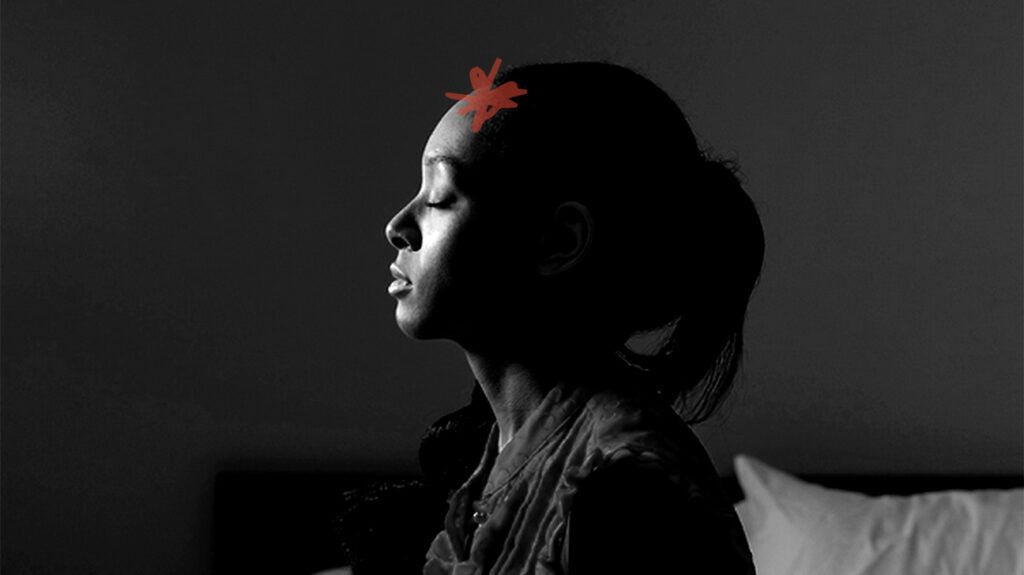Paroxysmal hemicrania is a type of severe headache that can cause sudden, throbbing pain on one side of the face or behind the eye. The headaches can occur frequently throughout the day and may last up to 30 minutes at a time.
Paroxysmal hemicrania is a primary headache. Primary headaches are those that occur without an underlying health condition, injury, or trauma.
In between paroxysmal hemicrania attacks, a person may also experience dull aching and tenderness in the head and face.
This article looks at the types of paroxysmal hemicrania, their symptoms, causes, treatments, and more.

There are two types of paroxysmal hemicrania a person may experience: chronic paroxysmal hemicrania and episodic paroxysmal hemicrania.
Chronic paroxysmal hemicrania is when a person experiences regular attacks for
Episodic paroxysmal hemicrania is when attacks occur at least twice a year but decrease in severity over time. They may disappear completely for months or years.
A person with episodic paroxysmal hemicrania will experience at least 3 months without symptoms in between each attack.
Learn about other types of headaches.
The main symptom of paroxysmal hemicrania is typically a severe and throbbing pain that can occur around or behind the eye on one side of the face. Symptoms can occur
A person with paroxysmal hemicrania may also experience:
- a runny nose
- a blocked nose
- redness and tearing of the eyes
- swelling of the eyelid on the side of the headache
- sweating or flushing of the face on the side of the headache
- dull pain and tenderness in between attacks
Learn more about throbbing headaches.
There is no known direct cause of paroxysmal hemicrania. However, there may be certain elements that trigger a paroxysmal hemicrania attack. These
A
Paroxysmal hemicrania is more common in females than males. It is also most likely to occur when a person reaches adulthood, with an average age of onset of 33 years.
To diagnose paroxysmal hemicrania, a doctor
There is no specific test for diagnosing paroxysmal hemicrania. If a doctor suspects a person may have paroxysmal hemicrania, they may prescribe a course of indomethacin — a type of nonsteroidal anti-inflammatory drug (NSAID) — to observe how the headaches respond.
Indomethacin is a medication that is extremely effective in treating paroxysmal hemicrania. If, after taking the medication, a person stops experiencing symptoms, a doctor may diagnose paroxysmal hemicrania.
Alternative treatments for paroxysmal hemicrania may be slightly less effective. They include other types of NSAIDs such as aspirin, diclofenac, and naproxen.
There have been few studies into the prevalence of paroxysmal hemicrania. However, a study looking at unilateral side-locked headaches in a specialist adult headache clinic found that paroxysmal hemicrania accounted for
More research about the prevalence of paroxysmal hemicrania is necessary.
Here are some common questions about paroxysmal hemicrania.
Does paroxysmal hemicrania go away?
Taking indomethacin for paroxysmal hemicrania
What is the drug of choice for paroxysmal hemicrania?
The NSAID indomethacin is typically the primary source of treatment for paroxysmal hemicrania. Other NSAIDs may also help but may not be as effective.
What is the difference between cluster headaches and paroxysmal hemicrania?
Cluster headaches and paroxysmal hemicrania can have similarities. Typically, each paroxysmal hemicrania attack lasts for a shorter duration than a cluster headache. They also typically occur more frequently than cluster headaches.
Another difference between the two is that the medication indomethacin is typically not effective for treating cluster headaches. However, it is very effective at treating paroxysmal hemicrania.
Paroxysmal hemicrania is a type of severe headache that typically causes intense stabbing pain around or behind the eye on one side of the face.
A person with paroxysmal hemicrania may experience other symptoms such as a runny or blocked nose, redness and tearing of the eyes, swelling of the eyelid on the side of the headache, and dull pain and tenderness between attacks.
The exact cause of paroxysmal hemicrania is unclear. However, research suggests that paroxysmal hemicrania is more common in females than males and is more likely to occur in adulthood.
The most effective treatment for paroxysmal hemicrania is the NSAID indomethacin. Over time, this medication may stop symptoms altogether.
